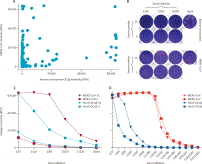
Middle East respiratory syndrome coronavirus neutralising serum antibodies in dromedary camels: A comparative serological study (Article)
The Lancet Infectious Diseases
Volume 13, Issue 10, October 2013, Pages 859-866
Reusken, C.B.E.M. , Haagmans, B.L., Müller, M.A., Gutierrez, C., Godeke, G.-J., Meyer, B., Muth, D., Raj, V.S., Vries, L.S.D., Corman, V.M., Drexler, J.-F., Smits, S.L., El Tahir, Y.E., De Sousa, R., van Beek, J., Nowotny, N., van Maanen, K., Hidalgo-Hermoso, E., Bosch, B.-J., Rottier, P., Osterhaus, A., Gortázar-Schmidt, C., Drosten, C., Koopmans, M.P.G.
Abstract
Background: A new betacoronavirus-Middle East respiratory syndrome coronavirus (MERS-CoV)-has been identified in patients with severe acute respiratory infection. Although related viruses infect bats, molecular clock analyses have been unable to identify direct ancestors of MERS-CoV. Anecdotal exposure histories suggest that patients had been in contact with dromedary camels or goats. We investigated possible animal reservoirs of MERS-CoV by assessing specific serum antibodies in livestock. Methods: We took sera from animals in the Middle East (Oman) and from elsewhere (Spain, Netherlands, Chile). Cattle (n=80), sheep (n=40), goats (n=40), dromedary camels (n=155), and various other camelid species (n=34) were tested for specific serum IgG by protein microarray using the receptor-binding S1 subunits of spike proteins of MERS-CoV, severe acute respiratory syndrome coronavirus, and human coronavirus OC43. Results were confirmed by virus neutralisation tests for MERS-CoV and bovine coronavirus. Findings: 50 of 50 (100%) sera from Omani camels and 15 of 105 (14%) from Spanish camels had protein-specific antibodies against MERS-CoV spike. Sera from European sheep, goats, cattle, and other camelids had no such antibodies. MERS-CoV neutralising antibody titres varied between 1/320 and 1/2560 for the Omani camel sera and between 1/20 and 1/320 for the Spanish camel sera. There was no evidence for cross-neutralisation by bovine coronavirus antibodies. Interpretation: MERS-CoV or a related virus has infected camel populations. Both titres and seroprevalences in sera from different locations in Oman suggest widespread infection. Funding: European Union, European Centre For Disease Prevention and Control, Deutsche Forschungsgemeinschaft.



